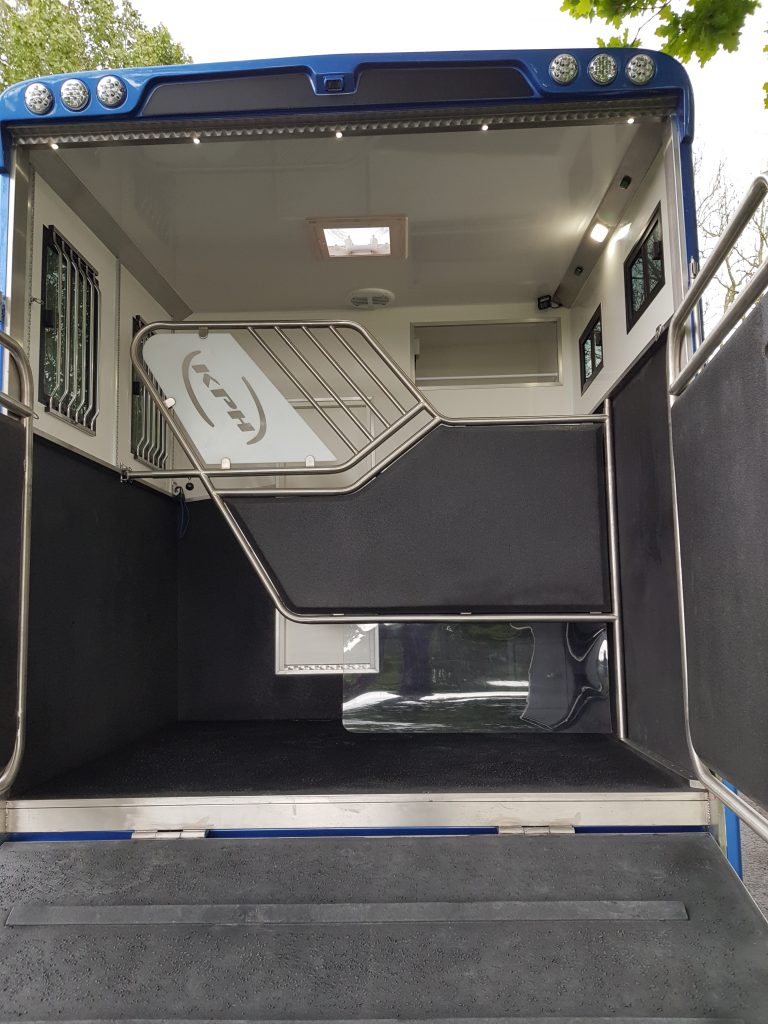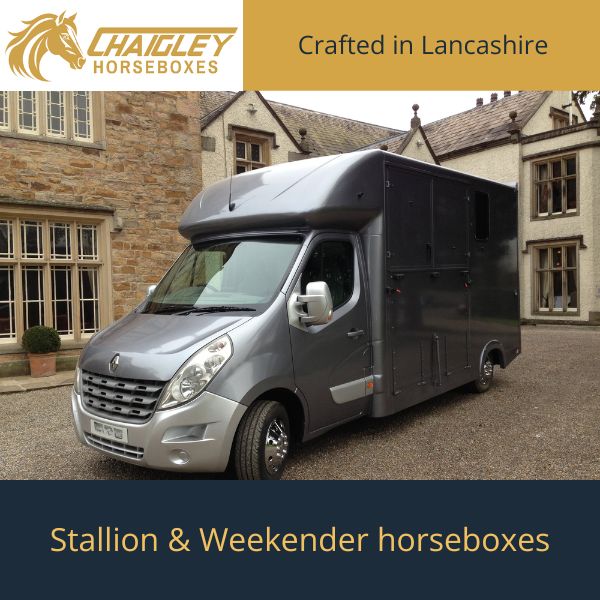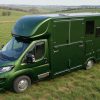
Horsebox ventilation and the problems caused to your horses by prolonged exposure to high temperatures
To pre-empt the forecast for much warmer weather I have added some information on designing horseboxes to cope with heat and a few pointers for horsebox ventilation in hot weather.
Designing primarily around horse safety and comfort, we dedicated many hours to the issues of heat build-up. There is without question plenty of research already out there on the effects of prolonged exposure at high temperatures and how it causes heat stress, heat stroke, dehydration, muscle spasms and colic. These are all avoidable issues if addressed as part of the overall ventilation design.
Heat and colour
From previous research and development, roof colour has to be white to reflect heat. Dark colours absorb heat, so avoiding a dark finsh is essential.
Head room
I cannot understate the importance of head room as part of any good ventilation strategy. It is a crucial aspect of any horsebox design. As heat rises, the hottest part of the horse area is always going to be nearest the ceiling. For our part we use 8’ up to 8’ 6” headroom. Not only does this make horseboxes suitable for the largest of horses, it keeps the hottest air high up above the horses head height, where ventilation systems can easily remove it.
Windows and air flow
Glass and especially colour play an important part again and tinted glass is preferable. It reduces direct sunlight that adds extra heat to the horse area, so tinted glass is good as long as it remains clear enough for the horses to see out. Widows are basically the starting place for good air flow and heat removal. Window size plays an important part in the cooling effect of air drawn over the horses. A good design will see one large horse window for each horses head and smaller higher windows at the tail. This window size difference is crucial as it allows air flowing past a moving horsebox to cause a greater vacuum on the larger windows than the smaller ones. This vacuum effect draws air into the horsebox through the small windows, across the horses and out of the larger head windows. However, it is worth noting that if both windows were the same size, air pressure would be equal both sides of the horsebox and little to no air would move inside the horse area. This effect is mostly for a moving horsebox with all the windows open. For a stationary horsebox very little air moves across the horses apart from that caused by wind. It is also noteworthy that for hot or stale air to leave the horse area, fresh clean air must have a way in. For example, closed tail end windows would stop air flowing in and being drawn over the horses, so no cooling effect would be present.
Roof vents and air flow
Let’s start with a hot horse area and a stationary horsebox. The hottest air is at the ceiling and cooler air low down. Opening a roof vent fully will allow hot air to flow up and out causing cooler air to flow in through the windows. A clever trick here and one we use in our own horsebox design maximises this effect by allowing much cooler air to flow in at floor height.
For a moving horsebox with a hot horse area things get more complicated still. Opening the roof vent and windows fully will remove some hot air, however, there is a way to move much more hot air out by tilting the vent. Actually opening fully the rear most part of the vent and closing the cab end of the vent fully will cause a considerable vacuum effect as air passes over the horsebox roof and tilted vent. At speed this vacuum effect will be considerable and as long as the windows are open the cooling effect will also be considerably increased, even removing more hot air more than an extraction fan!
Intake and extraction fans
These can be even more complicated depending on the size of horse area and the amount fitted. For a moving horsebox fans actually remove less air than a tilted roof vent. Where fans really shine, is parked or stationary traffic and even ferry or tunnel crossings where little air flow is possible. For small horseboxes with open windows probably one extraction fan is all that is necessary. For larger horseboxes intake and extraction fans are fitted and this negates the need for open windows. Remember fans use considerable power and if the engine is not running they can soon flatten batteries.
Air conditioning
This is the most controllable option and one we use for our largest HGV horseboxes. These only work as long as every window and vent is closed. They work by drawing fresh air in and cooling it to a set constant temperature for the horse area. These are a very good option but expensive and power hungry.
Lazy air
Muddying the water further and adding another level of complication to cooling is the fact that air is extremely lazy and this applies to all the options above with the exeption of AC. Now you have to bear in mind that your goal is to remove hot air and draw cooler air across your hot horses. I will use an extraction fan as an example here.
So, you are loaded with horses, all the windows are open and you turn on the fan to keep them cool. However, you have forgotten Mr Lazy air, he cannot be bothered to travel all the way across your horses and cool them, his far easier option is to take a direct route from the nearest open window straight to the extraction fan. Hot air will still be removed, but the cooling effect on your horses will be much reduced.
Now you have some trial and error ahead of you to get this working properly. Starting by partly closing the nearest windows to the fan, you should be able to even out air flow from each window so air has to travel over your horse to reach the exit fan.
For testing we did all this with a smoke machine and it was still surprisingly difficult, but very enlightening.
There you go, complicated but something to think on and I hope it helps.







